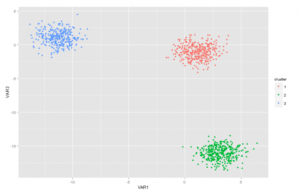The world is becoming increasingly digital with each passing day, disrupting and transforming the world’s traditional business models. Financial services are no exception, and for a classic retail model, this isn’t a bad thing at all.

Banks are adopting a client-centred approach to meet changing customer demands
Ask your friends and family what they think of their bank, and most will likely roll their eyes, sigh, and tell you about the misadventures and frustrations they’ve experienced as a customer.
In order to change this perception, banks are adopting a client-centred approach to their services, to try to forge a deeper and more meaningful relationship with their audience.
The financial sector is facing up to the big challenges of digitalisation, with “business as usual” evolving alongside technological developments to create new value in the increasingly interdependent networks and complex value chains that cross business and industry boundaries.
And it’s not just the way we do business and the technology we use to do it that is changing. Customer demands are changing too.
Customers want increasingly more from their bank, and the nature of what they want is also moving with the times. It’s not enough to simply offer products like mortgages and overdrafts, and there is plenty of room to innovate and to include additional products and services.
Today, a bank needs to give people something more than the traditional offering, not only in material terms on a product level, but also on an emotional level – the way we communicate and connect with each other is changing, so banking must change with it.
In this interconnected digital world, it serves financial organisations to either be part of an ecosystem of products and services, or to be ready and willing to build their own platform. Both models have different goals, tasks, and speeds of realisation, but to survive in today’s marketplace, one of these paths must be taken.
It only takes a quick look at the world we live in today to realise that such ecosystems are everywhere. Apple have their own ecosystem built on the success of their popular devices. Google and its systems form an ecosystem which shaped the internet as we know it today. Facebook are developing e-commerce and payment systems and working to integrate their services. Ecosystems are all around us, and if you don’t grow your own, you have to use someone else’s.
To take just one example, most modern banks are now using digital assistants. Day by day these capabilities grow leaps and bounds, gaining experience, learning, and functionality. For many of us, virtual assistants have become not just useful tools, but friends, advisors, and generally pleasant interlocutors with whom it is enjoyable to interact.
But the majority of these virtual assistants are borrowed from third parties, limiting their functions. Yet virtual assistants are a good example of an interaction model where customers become attached to your brand and your emotional essence.
All of us can agree that the future is with multimodal architecture, where one can choose to use either voice, touch, gestures, computer vision, or all of these combined to achieve the utmost user experience all powered by personalised AIs “living” in our home electronics products.
This approach is utilised by many digital giants, and while it might seem strange to see a bank building smart home electronics, as one tech guru once said: “If you’re serious about software, you have to build your own hardware”.
To give one example, Amazon started off as a bookstore and now is a major tech player and online retailer. But if you think about it, what gave them the first major boost was not AWS, but creating their own piece of hardware – Kindle.
With the benefits of AI and machine learning from customer data and interactions, it’s possible that the relatively simple virtual assistant of today could become even more sophisticated tools to help customers manage their money and make higher-value financial decisions.
Moreover, the assistants are likely to take on a more complete form, with holograms complementing the voice or in some other way, and I hope that all of us will be surrounded by assistive technology wherever we go regardless of our status and whether we have human assistants at work.
We will have a lot of assistance from various devices, various channels of interactions. But speaking of the future, the only thing I’m certain of is that the future is bright, and that those who have the courage to forge their own path, their own ecosystem, will be at the forefront of that future.
 About the author:
About the author:
David Rafalovsky is CTO at Sberbank Group.
He holds a master’s degree in software development from Tel Aviv University.
- 2021
- Additional
- advisors
- AI
- All
- Amazon
- Apple
- architecture
- around
- Assistant
- audience
- AWS
- Bank
- Banking
- Banks
- build
- Building
- business
- change
- channels
- Computer Vision
- Creating
- CTO
- Customers
- data
- day
- Development
- Devices
- digital
- Digital Transformation
- e-commerce
- ecosystem
- Ecosystems
- Electronics
- experience
- facing
- family
- financial
- Financial sector
- financial services
- First
- form
- Frustrations
- future
- Goals
- good
- Group
- Grow
- Hardware
- Home
- HTTPS
- industry
- interaction
- Internet
- IT
- Key
- learning
- Level
- machine learning
- major
- Majority
- marketplace
- model
- money
- networks
- offer
- offering
- online
- online retailer
- order
- Organisations
- Other
- payment
- Payment Systems
- People
- platform
- player
- Plenty
- Popular
- Product
- Products
- retail
- retailer
- Roll
- sberbank
- Services
- Simple
- smart
- Smart home
- So
- Software
- software development
- started
- Status
- success
- Systems
- tech
- Technology
- Tel Aviv
- The Future
- the world
- third parties
- touch
- Transformation
- transforming
- university
- us
- value
- Virtual
- virtual assistant
- vision
- Voice
- WHO
- Work
- world


